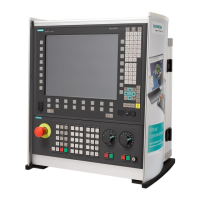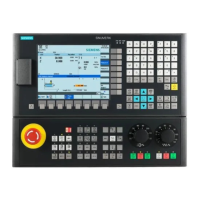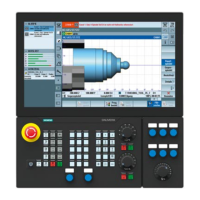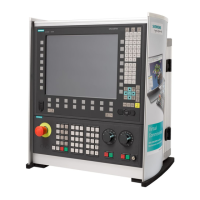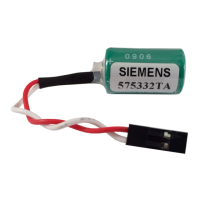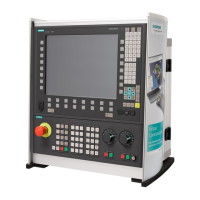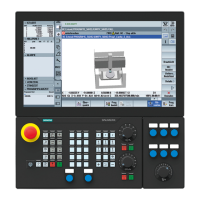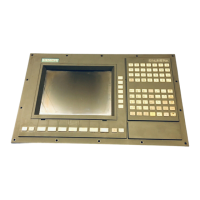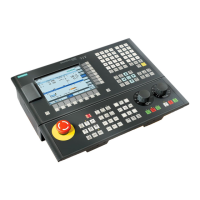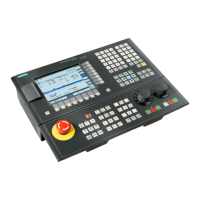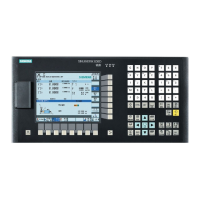Fundamental Geometrical Principles
1.4 Axes
Fundamentals
Programming Manual, 10.2004 Edition, 6FC5 298-7AB00-0BP1
1-23
• Synchronized axes traverse synchronously to path axes and take the same time to
traverse as all path axes.
• Positioning axes traverse asynchronously to all other axes. These traversing movements
take place independently of path and synchronized movements.
• Command axes traverse asynchronously to all other axes. These traversing movements
take place independently of path and synchronized movements.
• PLC axes are controlled by the PLC and can traverse asynchronously to all other axes.
The traversing movements take place independently of path and synchronized
movements.
1.4.1 Main axes/Geometry axes
The main axes define a right-angled, right-handed coordinate system. Tool movements are
programmed in this coordinate system.
In NC technology, the main axes are called geometry axes. This term is also used in this
Programming Guide.
The "Switchable geometry axes" function (see Advanced) can be used to alter the geometry
axes grouping configured by machine data. Here any geometry axis can be replaced by a
channel axis defined as a synchronous special axis.
Axis identifier
For turning machines:
Geometry axes X and Z are used, and sometimes Y.
7RROV
5HYROYHUVZLYHO
D[LV
6SHFLDOVSLQGOH
6SHFLDOD[LV
7DLO
VWRFN
*HRPHWU\
D[HV
0DLQVSLQGOH
PDVWHUVSLQGOH
&D[LV
;
=
For milling machines:
Geometry axes X, Y and Z are used.
A maximum of three geometry axes are used for programming frames and the workpiece
geometry (contour).

